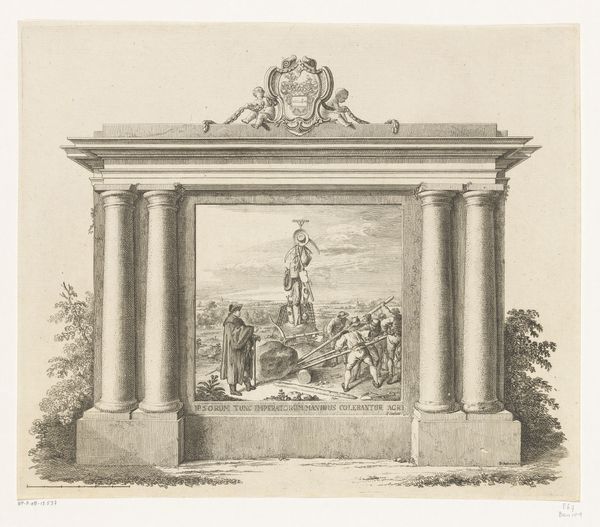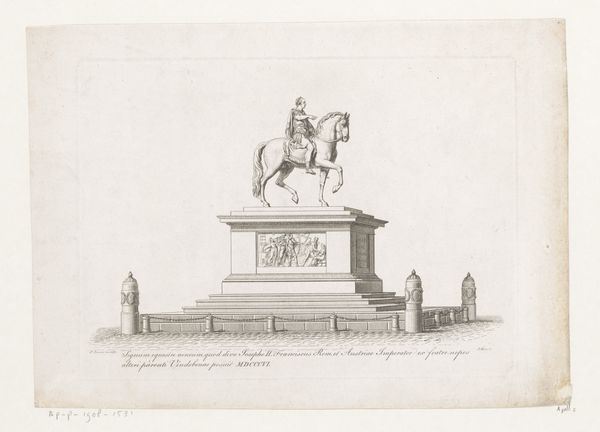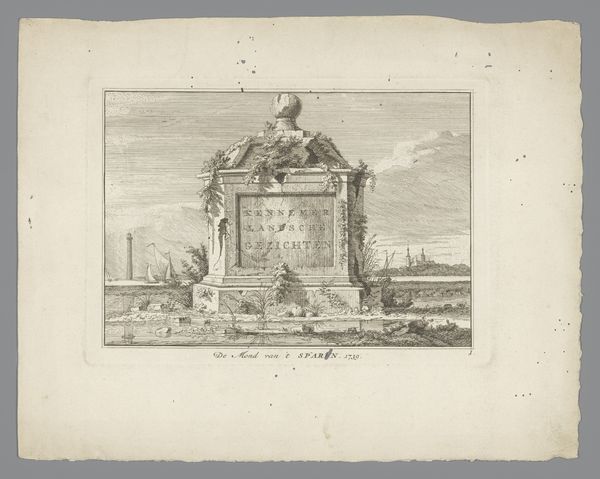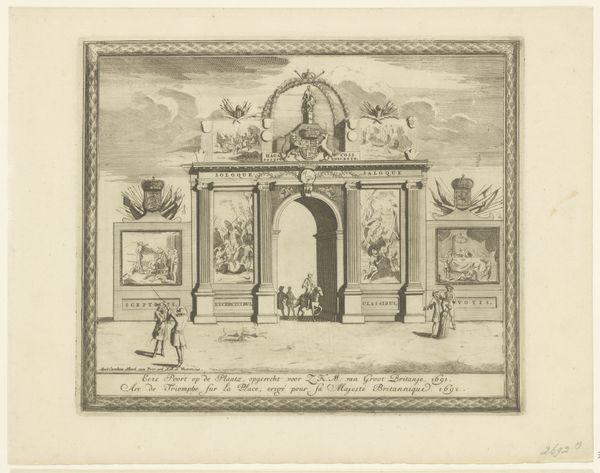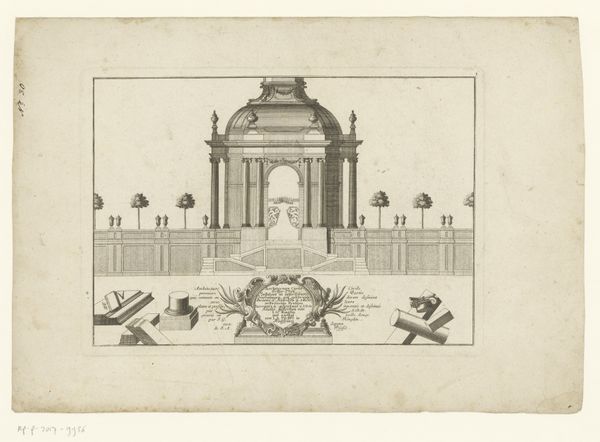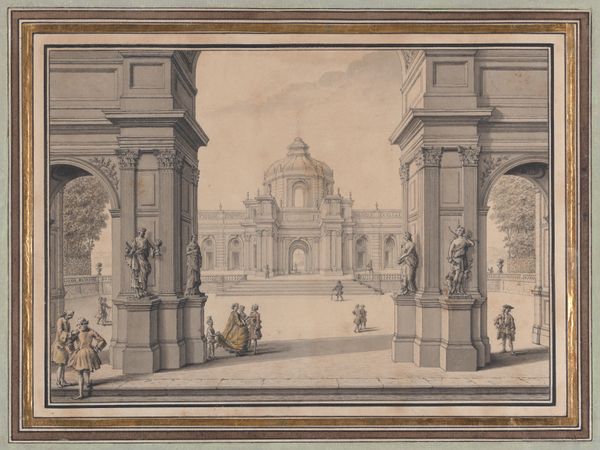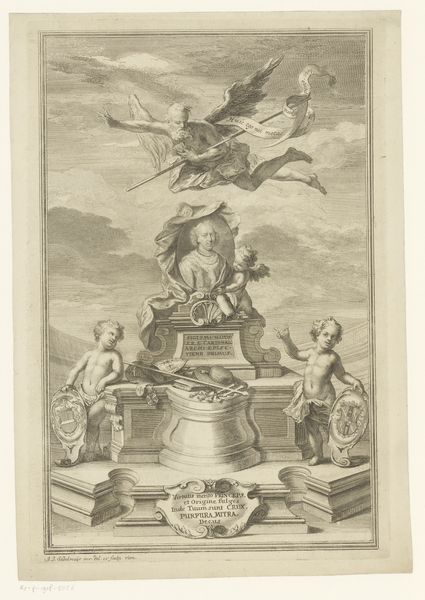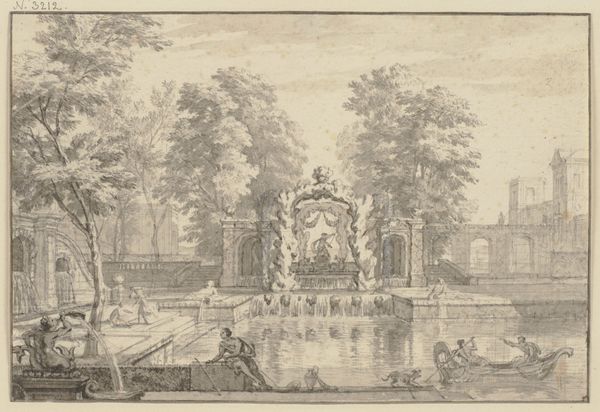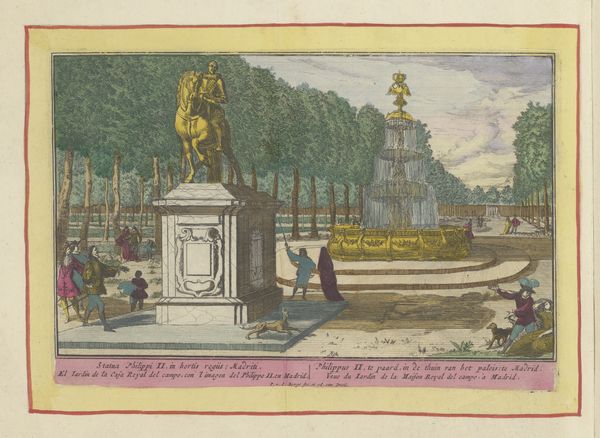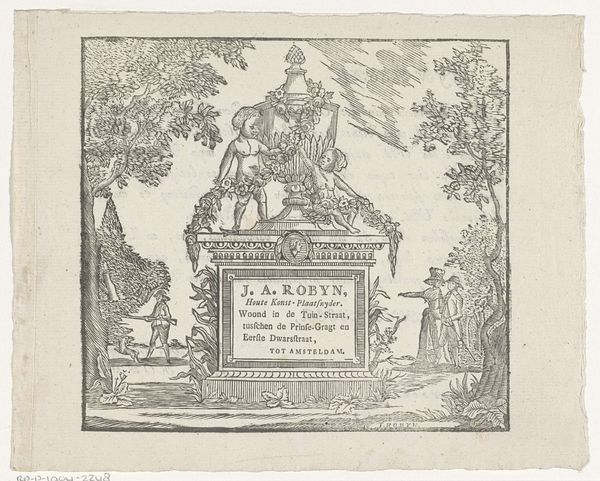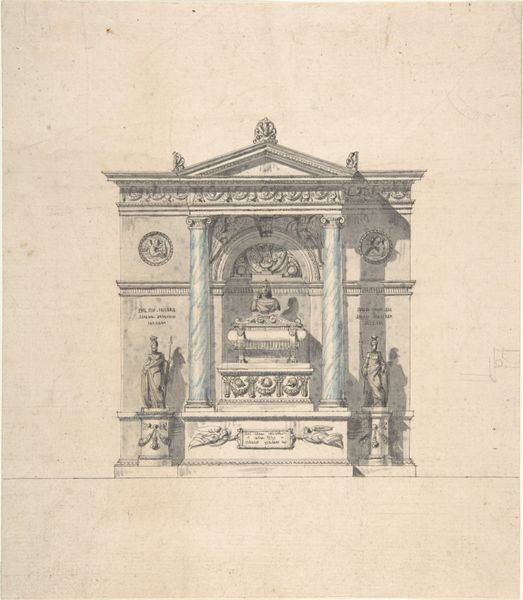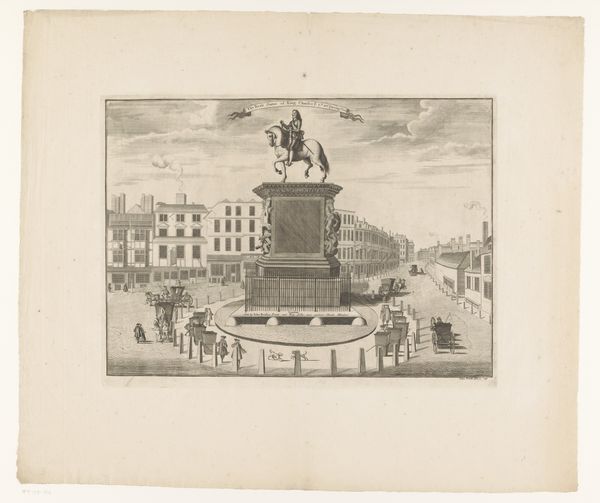
Design for a Monument of the Victory of Waterloo (recto); Portico with Corinthian Columns (verso) 1815
0:00
0:00
drawing, print, watercolor, sculpture
#
drawing
#
neoclacissism
#
water colours
# print
#
landscape
#
watercolor
#
geometric
#
sculpture
#
cityscape
#
history-painting
Dimensions: sheet: 15 1/16 x 20 5/8 in. (38.2 x 52.4 cm)
Copyright: Public Domain
Curator: Standing before us is Leo von Klenze’s watercolor and print creation, “Design for a Monument of the Victory of Waterloo," made in 1815. The verso even features a portico with Corinthian columns. What's your first impression? Editor: Overwhelming. The sheer scale is striking, even in this rendering. I see the colossal monument, sitting atop an impossibly long staircase leading toward what looks like the distant city skyline. But the figures seem strangely subdued, almost melancholic, despite the triumphant subject. Curator: It's interesting you pick up on that melancholy. Klenze, working in the Neoclassical style, uses a very controlled palette, all greys and subdued ochres. He relies heavily on geometric precision. The monument itself, crowned with figures on horseback, evokes ancient Roman triumphal arches. Think of it as a symbolic consolidation of power following Napoleon's defeat. Editor: Right. Waterloo...the end of an era and a reshaping of Europe. I see layers upon layers of symbolic language. Those horses, rearing up, are practically a universal symbol of power. And is that Nike, the winged goddess of victory, right in the center? Hovering just above what seems like two figures standing alongside the riders? Curator: Precisely! A powerful trinity indeed. But even her presence feels... contained. The monument’s bas-reliefs are filled with figures, a sea of humanity, but all depicted with such… regularity. Does that contribute to your reading? Editor: Definitely. The repetitive figures speak to the sacrifices made, the collective effort required for such monumental victories. But they lack individual faces. The symbolism emphasizes grand, abstract concepts more than the human experience. It's a victory tempered by the somber reality of its cost. Almost...funereal. The whole piece has a dream-like quality; not the triumphant boom I expected! Curator: And it’s the very restraint, the formality, that arguably enhances that sense of loss. Neoclassicism sought to impose order and rationality onto a world turned upside down. Von Klenze brilliantly conveys that struggle—the effort to contain immense emotions within the rigid structure of victory. The muted landscape reinforces the sentiment, almost like an abandoned stage for a long-forgotten play. Editor: So, instead of just celebrating, Klenze provides us with a powerful visual meditation. History isn’t only loud triumph; it's also quiet contemplation, long shadows, and maybe a little regret. Thanks for unveiling these layers for me. Curator: Thank you! This dialogue has further confirmed my impression that Klenze masterfully balances the glorification of victory with a stark and almost sobering assessment of its human weight.
Comments
No comments
Be the first to comment and join the conversation on the ultimate creative platform.
